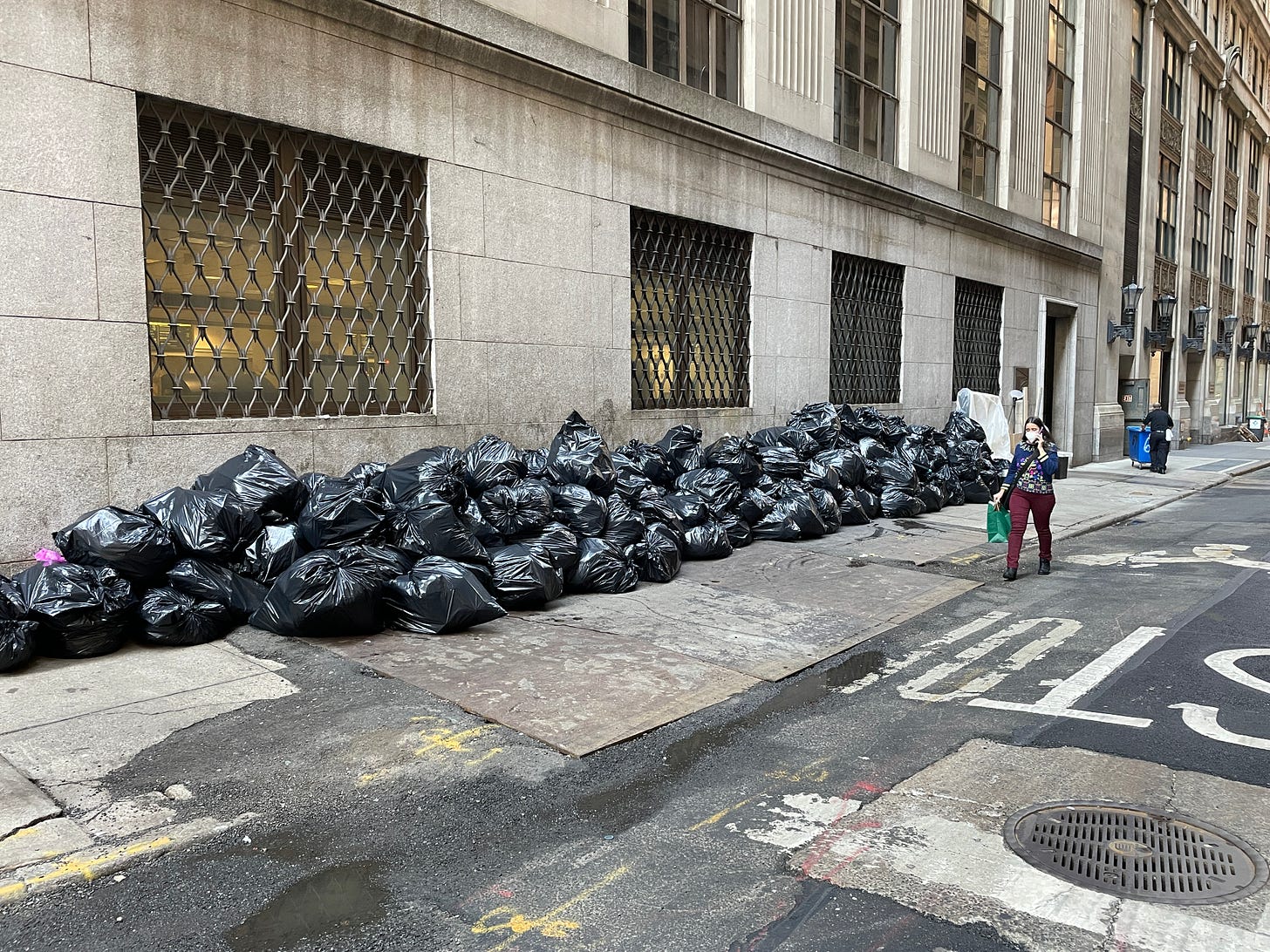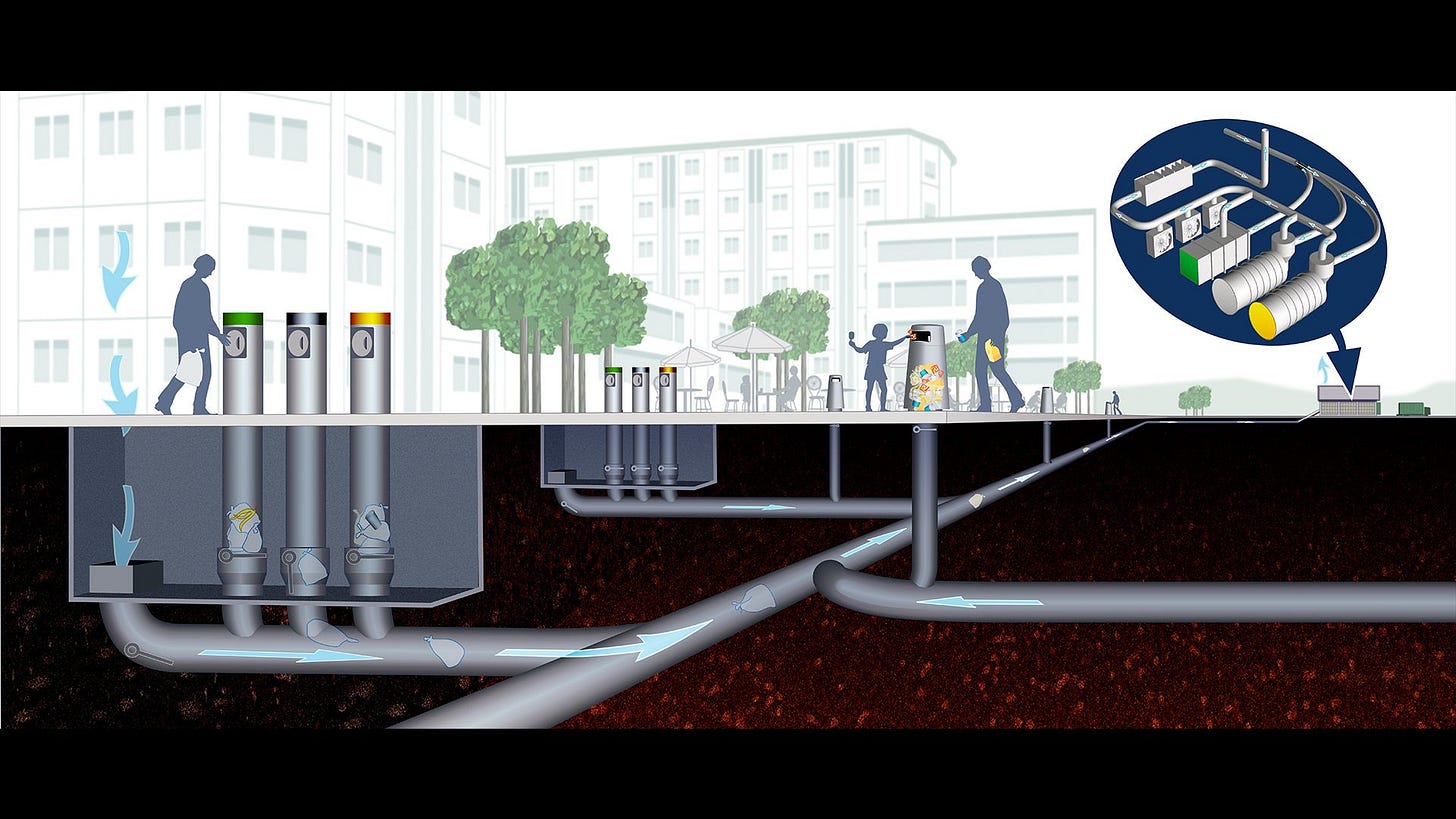Beyond the Bag: Where our Trash Goes
After spending $1.6 million of NYC tax dollars on a study, McKinsey told New Yorkers what we already know - when a trash bag is in a bin, it reduces street smells and rats. (Meanwhile, the same administration decided to end the city’s composting program due to “budget cuts” earlier this year.)
Eric Adams proudly unveiled NYC’s newest trash can earlier this week. And get this, it looks like a regular bin and is nothing special. If you grew up in the suburbs, then you’re already familiar with the ubiquitous trash bin. Starting later this year, residential buildings with 1 to 9 units must secure trash in bins rather than dump bags onto the sidewalk. Big whoop. But enough of this trash talk about the city administration’s latest and greatest plan.
There is a trash can in every space a human occupies. From small bins to built-in trash cabinets, we all keep our trash contained before it’s ready to go into the dumpster. Single family and townhouse residents bring trash out to the sidewalk bin. Highrise residents drop their junk into a magical chute in the trash room. Then, sanitation workers haul garbage away from buildings and bring it to processing facilities never to be seen by the trash creators themselves.
While the McKinsey and the mayor think trash cans are the hot new innovation, we wanted to shed light on a unique waste system built in the 1970s on Roosevelt Island. Roosevelt Island is a thin, 2-mile long island between Manhattan and Queens. Part of the island’s extensive development in the 60’s and 70’s included installing a pneumatic trash system underground.
Invented in Sweden by Envac, the pneumatic trash system otherwise known as an automated vacuum waste collection system moves trash at high speeds into a collection container below ground. The container compacts the trash and then it gets trucked to a landfill. Trash collected through this system never interacts with the street level, resulting in cleaner, less polluted urban life. While the system requires maintenance if a resident “accidentally” throws in a Christmas tree or other large items, the reduction in greenhouse gases and vermin is worth the trade off.
Prevalent in Europe and Asian, there are only two places in America with the Envac system - Roosevelt Island and Disney World. While it is challenging to disrupt existing American infrastructure at scale, new mixed use developments can incorporate systems for new builds. Polo Ground Towers in Harlem will be the first public housing project in the U.S. with a pneumatic trash system.
Maybe we’re getting our sh*t together after all.







